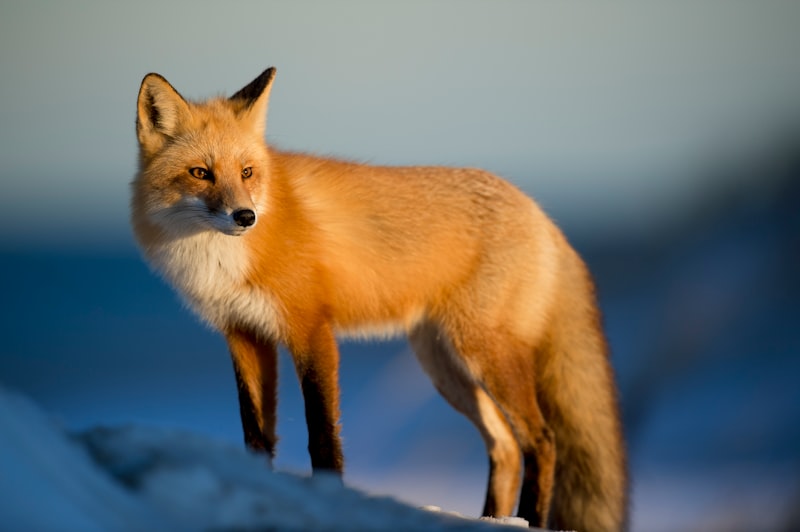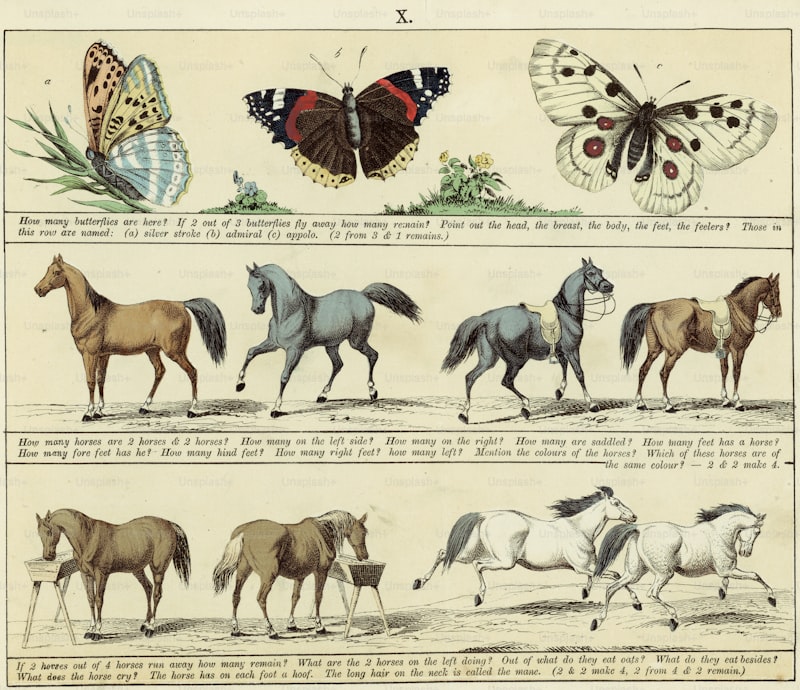One remarkable example of adaptation is found in the Arctic fox. This resilient creature sports a thick, multi-layered fur coat that not only provides warmth but also changes color with the seasons, blending seamlessly into its snowy surroundings to evade predators and sneak up on prey. During the frigid winter months, their fur becomes a pristine white, while in the summer, it shifts to a brown or gray hue, camouflaging them against rocky terrain and sparse vegetation.

Similarly, desert dwellers like the camel have evolved specialized physiological traits to combat the blistering heat and scarcity of water. Their ability to survive for long periods without drinking water is facilitated by large, efficient kidneys that minimize water loss through urine. Furthermore, their nostrils are uniquely adapted to retain moisture from exhaled air, preventing excessive dehydration in arid conditions.
In the depths of the ocean, creatures face extreme pressures and perpetual darkness. Deep-sea fish like the anglerfish have developed bioluminescent organs called photophores, which dangle like lures from their heads, attracting prey in the abyssal gloom. These adaptations not only aid in hunting but also in communication and mate recognition in the lightless depths.
Nature’s repertoire of adaptations extends beyond physical changes to include behavioral strategies. Arctic terns, for instance, migrate astonishing distances each year, from their breeding grounds in the Arctic to wintering sites near Antarctica, capitalizing on favorable weather and food availability. This annual journey showcases their navigational prowess and adaptive flexibility in responding to changing environmental cues.
Survival Tactics Unveiled: How Animals Thrive in Extreme Environments
Imagine a world where survival isn’t just about thriving—it’s about conquering extremes. Animals across the globe have evolved remarkable strategies to endure the harshest environments, from scorching deserts to icy polar regions. Let’s delve into the awe-inspiring tactics these creatures employ to not just survive, but to thrive.
In the blistering heat of deserts, where the sun bakes the earth and water is scarce, survival is a game of adaptation. Take the iconic camel, known for its ability to withstand blistering temperatures and scarcity of water. Its hump isn’t just a quirky feature; it stores fat, which can be metabolized into water and energy when resources are scarce. This adaptation allows camels to endure weeks without water—a true marvel of nature’s engineering.

On the other end of the spectrum, in the icy realms of the Arctic, where temperatures plummet and daylight can vanish for months, animals face an entirely different set of challenges. The Arctic fox, with its thick fur and keen hunting skills, is a master of survival. Its fluffy coat provides insulation against the cold, while its hunting prowess allows it to secure prey even in the most unforgiving conditions. Adaptations like these not only ensure survival but also enable these creatures to thrive in one of the planet’s most extreme environments.
But survival isn’t just about physical adaptations; it’s also about behavioral strategies. Take the resilient penguin colonies in Antarctica. To survive the brutal winter, these birds huddle together in tightly packed groups, minimizing exposure to the cold and wind. This communal warmth not only helps them endure the harsh climate but also strengthens social bonds within the colony—a crucial aspect of their survival strategy.
In the depths of the ocean, where pressure is crushing and sunlight is nonexistent, creatures like the anglerfish have evolved extraordinary methods to thrive. The anglerfish, with its bioluminescent lure dangling above its mouth, attracts unsuspecting prey in the dark abyss. This adaptation allows it to conserve energy in a nutrient-poor environment where every calorie counts.
Nature’s playbook for survival in extreme environments is rich with examples that continue to astonish scientists and nature enthusiasts alike. From the arid deserts to the frozen tundra, from the depths of the ocean to the peaks of mountains, animals have perfected the art of survival through a combination of physical adaptations and behavioral strategies. As we uncover more about these remarkable creatures, we gain a deeper appreciation for the ingenuity and resilience of life on Earth.
From Frozen Tundras to Scorching Deserts: The Secrets of Animal Adaptation
In the icy expanses of frozen tundras, where temperatures plummet and snow blankets the ground for months, survival is a true test of endurance. Yet, creatures like the Arctic fox not only survive but thrive. How? Their thick fur coats act like natural insulation, trapping body heat and keeping them warm even in subzero temperatures. Their small, rounded ears minimize heat loss, and they have a keen sense of smell to hunt for prey under the snow. It’s like they’re wearing the perfect winter jacket, designed by nature itself.
On the flip side, in scorching deserts where the sun beats down relentlessly and water is scarce, animals face an entirely different set of challenges. Take the camel, often called the “ship of the desert.” Its ability to survive weeks without water is legendary. How does it manage this feat? Camels have adapted with specialized features like padded feet that can withstand hot sand, and a thick coat that reflects sunlight. Their humps store fat, not water as commonly believed, providing energy reserves to endure long periods without drinking. It’s as if they’re carrying their own survival kit wherever they roam.
But adaptation isn’t just about physical features; it’s also about behavior. Desert creatures like the Fennec fox are nocturnal, staying underground during the day to avoid the scorching heat and emerging at night when temperatures drop. This behavior helps them conserve energy and stay cool in their harsh environment.
From the Arctic to the Sahara, animals have evolved remarkable ways to thrive in extreme conditions. Their adaptations are a testament to the power of nature and the incredible diversity of life on Earth. Next time you see a creature braving the elements, remember the amazing adaptations that allow it to call even the most unforgiving environments home.
Nature’s Extremophiles: Animals That Defy the Odds in Harsh Climates
Imagine a desert so scorching that even the hardiest plants struggle to survive. Yet, the camel strides through with ease, its hump storing water for weeks, a true oasis on legs. This “ship of the desert” is not just a cliché but a marvel of evolutionary engineering, perfectly suited to endure blistering heat and scarce water.
On the icy plains of Antarctica, where temperatures plummet to -50°C, the emperor penguin waddles resiliently. Enduring months without food, they huddle together for warmth, showcasing the ultimate sacrifice for survival. Their thick layers of blubber and tightly packed feathers form an insulating barrier against the cold, a feat that few creatures can match.
Venture into the depths of the ocean, where sunlight fades and pressure mounts. Here, the anglerfish dangles its bioluminescent lure, a beacon of death in the abyssal darkness. This bizarre fish thrives in an environment where crushing pressure would pulverize most life forms, adapting with oversized jaws and a distensible stomach to swallow prey larger than itself.
In the boiling waters of hydrothermal vents, where sulfur belches forth in plumes, the yeti crab scuttles. Adorned with bristles that host bacteria capable of detoxifying poisonous minerals, it dances gracefully amidst adversity. Its appearance is more akin to an alien than a crab, yet it embodies nature’s creativity in adapting to extreme conditions.
Adapting or Perishing: The Evolutionary Marvel of Extreme Environment Adaptation
Survival in the wild isn’t just about strength or speed; it’s about adaptability. Creatures around the world showcase extraordinary abilities to thrive in some of Earth’s most extreme environments. From the scorching deserts to the icy poles, life has found ingenious ways to not just survive but to flourish against all odds.
Consider the camel, aptly nicknamed the “ship of the desert.” Its ability to withstand blistering heat and scarce water resources is nothing short of miraculous. With specialized adaptations like padded feet to navigate hot sand and the ability to conserve water through minimal sweating, camels have mastered survival in arid conditions where others would perish.
On the flip side, Arctic foxes exemplify adaptation to freezing climates. Their thick fur coat changes color with the seasons, providing camouflage against snowy landscapes and insulation against bitter cold. Meanwhile, their small ears reduce heat loss, allowing them to thrive in temperatures that would freeze other mammals.

Underwater, the anglerfish reigns with its bizarre adaptation. In the deep, dark ocean depths where sunlight doesn’t penetrate, this fish uses a bioluminescent lure to attract prey in its vicinity. This adaptation not only aids in hunting but also in navigating the abyssal plains where food is scarce and darkness is perpetual.
These examples illustrate nature’s remarkable ability to evolve and adapt to diverse and often harsh environments. Whether through physical traits like fur or feet, or behavioral strategies like hunting tactics, each species has honed its survival skills over millennia of natural selection. The ongoing evolution of life forms continues to inspire awe and intrigue, showcasing the resilience and creativity inherent in the struggle for existence.
Frequently Asked Questions
How do animals find water in arid landscapes
Learn how animals survive in arid environments by discovering water sources through keen senses, adaptation to terrain, and utilizing plant moisture during critical periods.
What behavioral adaptations do animals exhibit in extreme conditions
Learn about the fascinating ways animals adapt to extreme conditions, from camels storing water in their humps to Arctic foxes growing thick fur for warmth. Explore how these adaptations help animals thrive in harsh environments.
What physical adaptations help animals in extreme environments
Learn about the physical adaptations that enable animals to survive in extreme environments. This FAQ explores how features like thick fur for insulation, camouflaging skin patterns, specialized respiratory systems, and efficient water retention mechanisms allow animals to thrive in harsh conditions.
Which animals can survive at high altitudes, and how
Discover which animals can survive at high altitudes and learn about their unique adaptations. Explore how these creatures thrive in extreme mountain environments.
How do animals survive extreme heat or cold
Learn how animals survive extreme temperatures with adaptive behaviors and physical characteristics that help regulate their body heat or conserve warmth. Discover strategies like hibernation, migration, insulation, and behavioral adaptations that enable animals to thrive in harsh environmental conditions.


